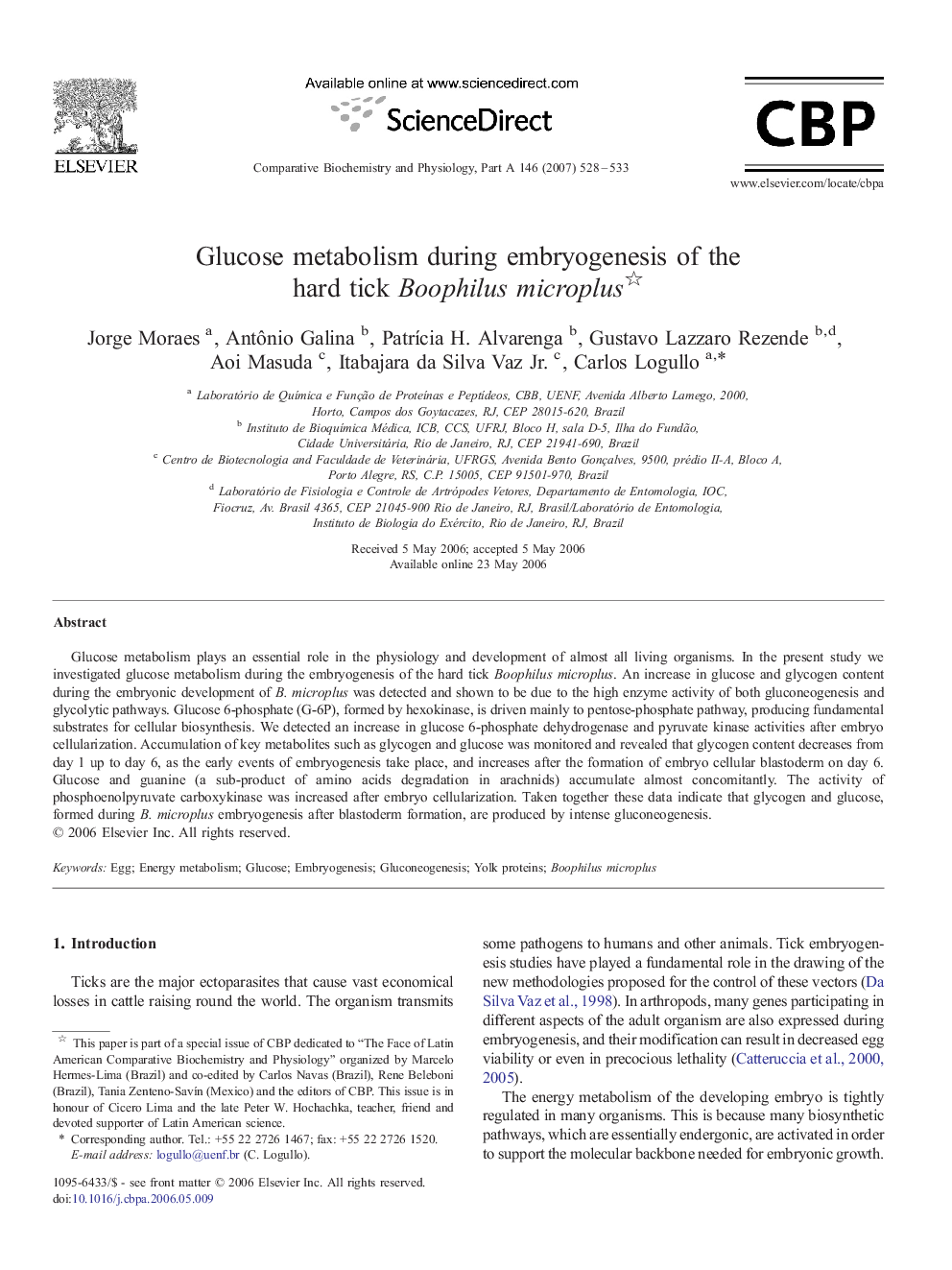| Article ID | Journal | Published Year | Pages | File Type |
|---|---|---|---|---|
| 1974873 | Comparative Biochemistry and Physiology Part A: Molecular & Integrative Physiology | 2007 | 6 Pages |
Glucose metabolism plays an essential role in the physiology and development of almost all living organisms. In the present study we investigated glucose metabolism during the embryogenesis of the hard tick Boophilus microplus. An increase in glucose and glycogen content during the embryonic development of B. microplus was detected and shown to be due to the high enzyme activity of both gluconeogenesis and glycolytic pathways. Glucose 6-phosphate (G-6P), formed by hexokinase, is driven mainly to pentose-phosphate pathway, producing fundamental substrates for cellular biosynthesis. We detected an increase in glucose 6-phosphate dehydrogenase and pyruvate kinase activities after embryo cellularization. Accumulation of key metabolites such as glycogen and glucose was monitored and revealed that glycogen content decreases from day 1 up to day 6, as the early events of embryogenesis take place, and increases after the formation of embryo cellular blastoderm on day 6. Glucose and guanine (a sub-product of amino acids degradation in arachnids) accumulate almost concomitantly. The activity of phosphoenolpyruvate carboxykinase was increased after embryo cellularization. Taken together these data indicate that glycogen and glucose, formed during B. microplus embryogenesis after blastoderm formation, are produced by intense gluconeogenesis.
